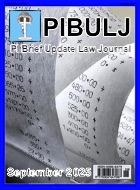Rashpal Samrai and Others v Rajinder Kalia and Others [2025] EWHC 1449 (KB) - Andrew Ratomski, Temple Garden Chambers

15/07/25. Date of judgment: 13 June 2025.
This judgment concerned a number of consequential costs matters following the handing down of judgment in the main claim where the Defendant was the successful party. Martin Spencer J had to consider in particular the mixed claim exception to the Qualified One Way Costs Shifting (“QOCs”) protection afforded to personal injury claimants in a relatively novel set of claims. In the background was also an application for wasted costs issued against the Claimant’s solicitors and counsel resulting in those representatives withdrawing from the case and the Claimant instructing fresh representation.
The costs’ applications
The Judge ordered that costs would be assessed on the indemnity basis in respect of the second, third and fourth Claimants on the basis that their allegations that the Defendant, the leader of the Baba Balak Nath Temple in Coventry, had exploited his position and of financial and sexual abuse had all not been proven and found to be not true. Those findings were plainly sufficient to take the case “out of the norm” justifying an indemnity costs order. The Judge declined to award indemnity costs against the four remaining Claimants.
The claims of the first to fourth Claimants had included claims for personal injury and so by CPR 44.13, the QOCs regime was engaged. No orders for damages or costs had been made in favour of the these Claimants and so CPR 44.14 was not engaged. The Defendant relied on the exception whereby costs orders can be enforced with the permission of the court where a claim is made for the benefit of the claimant other than a claim to which QOCs applies (CPR 44.16(2). It was argued that CPR 44.16(2)(b) should apply to the non-personal injury aspects of the claim. It was submitted that the personal injuries damages accounted for only 5% of the damages claimed and that on a broad brush basis the time and expense of dealing with the non-personal injury aspects of the claim was 60%.
On behalf of the Claimants, it was contended that the case not exceptional and that the other claims were ancillary and this was a personal injury claim in the round with sexual exploitation at the heart of the case. It was also argued that the judgment had not amounted to a vindication of the Defendant’s conduct or credibility, and his categorical denial of a relationship with the first Claimant had been found to be false.
The decision
The Judge held that the case was not in the round a personal injury case such that costs protection would apply to the whole of the first to fourth Claimants’ claims. The judge observed that significant time was spent on cross-examination and submissions regarding the non-personal injury aspects of the claim and indeed three separate claimants had not brought any claims for personal injury. Claims arising from the Defendant’s alleged undue influence were all capable of being clearly separated out within the exception of CPR 44.16(2)(b).
Having satisfied himself that the exception was available, the Judge then considered whether to exercise his discretion to refuse to allow an appropriate proportion of costs be enforced. The Judge held that the Claimants had entered into the litigation “as adults with full knowledge of the risks which such litigation entails” and had been pre-warned of those risks when the Police declined to prosecute the Defendant on the basis that the evidence was insufficient. The Judge also considered the Claimants had increased their jeopardy on account of their conduct pre-trial and during the trial in their evidence. The disparity between each party’s financial position was also not a reason to exercise his discretion to not make the costs order sought.
The Judge then assessed the appropriate proportion of the costs on a broad brush basis to be 40%.
Discussion
This decision is another useful application of the mixed cases test under CPR 44.16. It highlights starkly the risks for claimants pursuing non-personal injury claims alongside a personal injury claim, and suggests that claimants who want to maintain their QOCs protection in the case of an adverse outcome should consider carefully how expansive a case to pursue.
https://caselaw.nationalarchives.gov.uk/ewhc/kb/2025/1449
Image ©iStockphoto.com/DNY59












![Appeal judge rules that credit hire company has no costs liability following a finding of fundamental dishonesty in personal injury case: RSA v. Fastrack Solutions Limited [2023] 4 WLUK 92 - David Bowden, Erimus Chambers](/content/images/resized/images/stories/carkeys_72_72.jpg)


